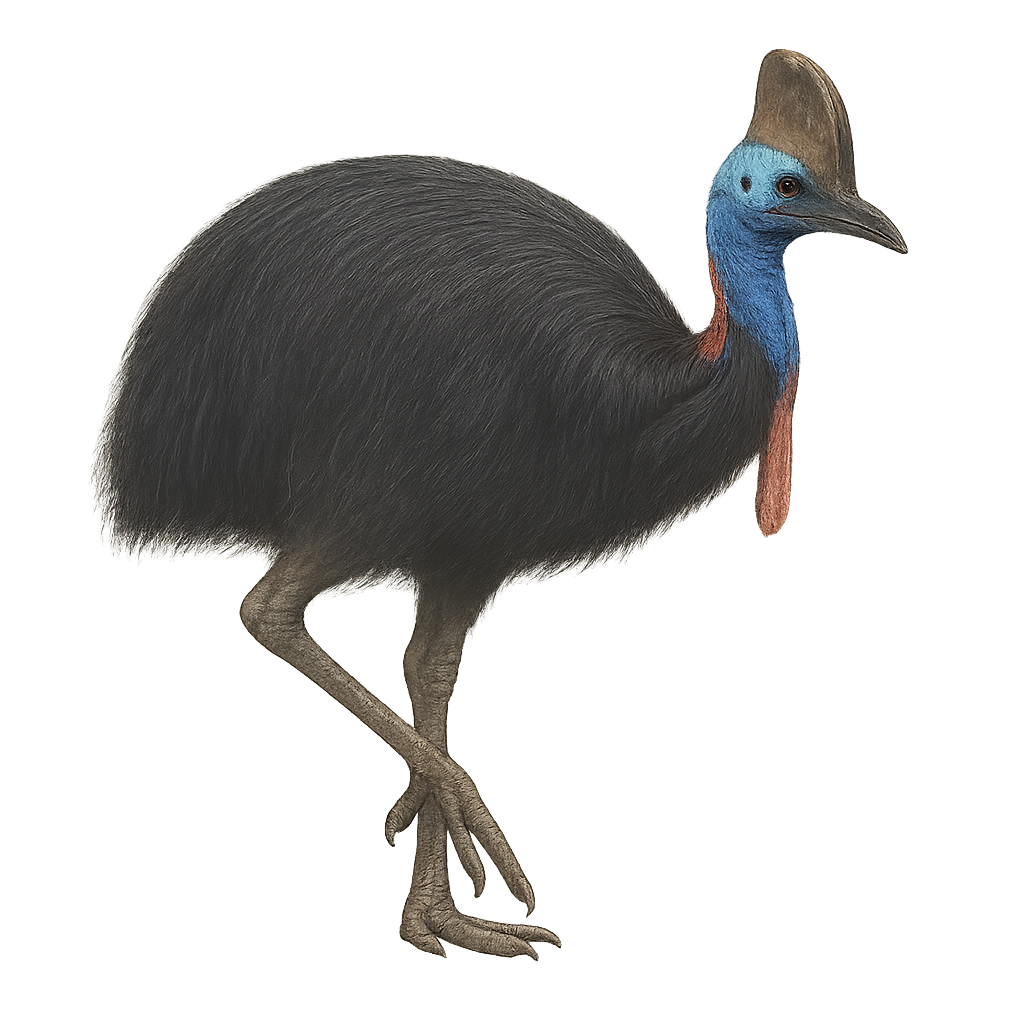Your wildlife photography guide.
Explore the dwarf cassowary in detail, study its behavior, prepare your shots.
Where to observe and photograph the dwarf cassowary in the wild
Learn where and when to spot the dwarf cassowary in the wild, how to identify the species based on distinctive features, and what natural environments it inhabits. The WildlifePhotographer app offers tailored photography tips that reflect the dwarf cassowary’s behavior, helping you capture better wildlife images. Explore the full species profile for key information including description, habitat, active periods, and approach techniques.
Dwarf Cassowary
Scientific name: Casuarius bennetti

IUCN Status: Near Threatened
Family: CASUARIIDAE
Group: Birds
Sensitivity to human approach: Suspicious
Minimum approach distance: 10 m
Courtship display: June to September
Incubation: 47-50 jours
Hatchings: July to November
Habitat:
Tropical forests, rainforests, mountainous areas
Activity period :
Primarily active during the day, with peak activity in the morning and late afternoon.
Identification and description:
The Dwarf Cassowary, also known as Bennett's Cassowary, is a large and majestic bird native to the tropical forests of New Guinea and surrounding islands. It stands out with its impressive height, reaching up to 1.5 meters, and its glossy black plumage. Its head is adorned with a bony crest, known as a casque, giving it a prehistoric appearance. This solitary bird is primarily frugivorous, feeding on fallen fruits, but it can also consume small animals and insects. The Dwarf Cassowary is an excellent runner, capable of moving swiftly through dense forest vegetation. Although generally discreet, it can become aggressive if it feels threatened.
Recommended lens:
400mm – adjust based on distance, desired framing (portrait or habitat), and approach conditions.
Photography tips:
To photograph the Dwarf Cassowary, it is advisable to use a telephoto lens of 400mm or more to capture detailed images from a distance without disturbing the bird. Look for areas where fruits fall, as these birds are often attracted to such spots for feeding. Be patient and discreet, as the Dwarf Cassowary is suspicious and can be difficult to approach. Opt for early morning or late afternoon hours when the soft light highlights the details of its plumage.
The WildlifePhotographer App is coming soon!
Be the first to explore the best nature spots, track rutting seasons, log your observations, and observe more wildlife.
Already 1 431 wildlife lovers subscribed worldwide

